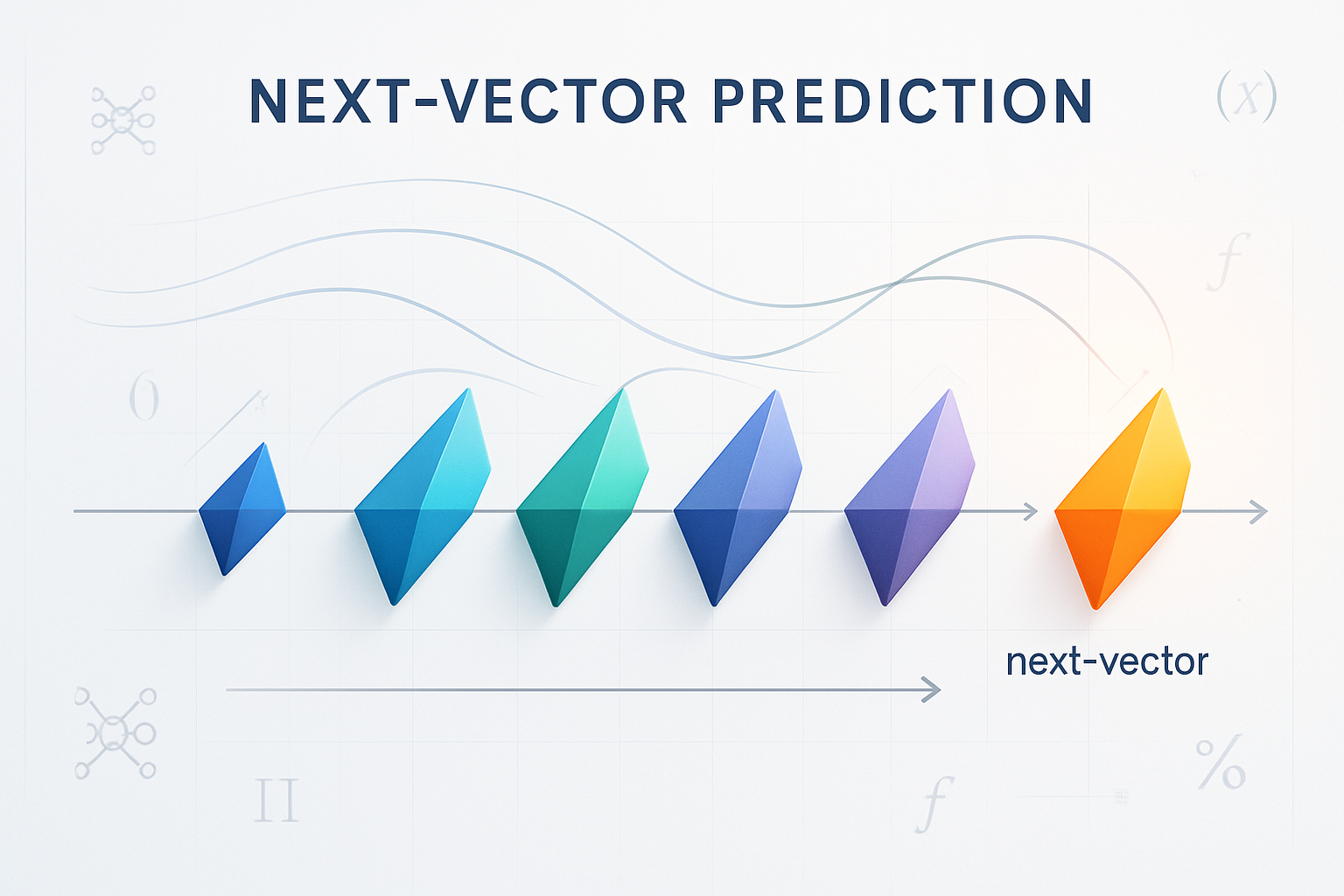In a landscape where large language models (LLMs) continually push the boundaries of artificial intelligence, the recent release of Solar Pro 2 has sparked significant excitement among researchers, developers, and enterprise users alike. Developed by Upstage, Solar Pro 2 represents a new epoch in open-source LLM innovation. Built with a compact 31-billion parameter architecture, this model is designed not only to rival some of the largest counterparts in performance but also to offer enhanced reasoning and multilingual capabilities while consuming far fewer resources.
With its rich feature set—from an extended 64K token context window to a unique Reasoning Mode for complex multi-step problem solving—Solar Pro 2 is poised to redefine the standards for what open-source LLMs can achieve.

Unveiling the Power of Solar Pro 2
Solar Pro 2 emerges as an exemplar of modern engineering and thoughtful design. Released by Upstage, the model has already demonstrated significant improvements over its predecessor and many contemporaries. At its core, Solar Pro 2 is imbued with advanced reasoning capabilities, a transformation in tokenization efficiency, and superior multilingual support that makes it optimal for global applications.
One of the striking features of Solar Pro 2 is its dual operating modes: Chat Mode and Reasoning Mode. The Chat Mode is tailored for rapid, fluid conversational interactions, ideal for customer support and chatbots. In contrast, the Reasoning Mode is designed to tackle complex, multi-hop queries and structured problem-solving scenarios, thus making it particularly adept for domains that require logical rigor and elaborate multi-step reasoning.
The design philosophy behind Solar Pro 2 emphasizes efficiency without compromising quality, making it a highly effective tool for developers who require state-of-the-art performance with reduced computational overhead.
The efficiency gains are further augmented by an upgraded tokenization algorithm. Solar Pro 2 reduces token usage by anywhere from 2% to 30% in certain scenarios, ensuring that not only is the model faster, but it also becomes more cost-effective for extensive deployments. This optimization is critical for enterprise users who need to deploy the model across varied workloads, from verbose documentation synthesis to real-time interactive applications.

How to Use Solar Pro 2: Setup, Installation, and Deployment
Adopting Solar Pro 2 is designed to be as streamlined as its operational efficiency. Whether you are a data scientist eager to experiment with cutting-edge LLM capabilities, or a developer looking to integrate advanced AI into production environments, Solar Pro 2 provides a host of flexible usage options.
Installation via Hugging Face
The primary gateway for most developers is the official page on Hugging Face, where Solar Pro 2 is readily available. By leveraging the powerful Transformers library, users can quickly set up and start generating high-quality responses. The installation process is straightforward. Begin by installing the necessary Python libraries:
bashCopy Codepip install transformers torch flash_attn accelerate
Once installed, you can load Solar Pro 2 directly in your Python environment:
pythonCopy Codeimport torch
from transformers import AutoModelForCausalLM, AutoTokenizer
tokenizer = AutoTokenizer.from_pretrained("upstage/solar-pro-preview-instruct")
model = AutoModelForCausalLM.from_pretrained(
"upstage/solar-pro-preview-instruct",
device_map="cuda",
torch_dtype="auto",
trust_remote_code=True,
)
messages = [{"role": "user", "content": "Introduce yourself."}]
prompt = tokenizer.apply_chat_template(
messages, return_tensors="pt", add_generation_prompt=True
).to(model.device)
outputs = model.generate(prompt, max_new_tokens=512)
print(tokenizer.decode(outputs[0]))
This snippet, available on Hugging Face, illustrates the ease with which Solar Pro 2 can be integrated into existing projects. The model is engineered to support single-GPU deployment, making it accessible even for those with limited computational resources.
Integration via the Upstage Console
For enterprises and developers who prefer a managed service approach, the Upstage Console provides direct access to Solar Pro 2 through a robust API. This method bypasses the need for local deployment and is ideal for rapid prototyping, scaling, and enterprise-grade applications. To use the API, obtain your API key from the Upstage Console, and then execute a simple curl command such as:
bashCopy Codecurl --location 'https://api.upstage.ai/v1/solar/chat/completions' \
--header 'Authorization: Bearer YOUR_API_KEY' \
--header 'Content-Type: application/json' \
--data '{
"model": "solar-pro",
"messages": [
{"role": "user", "content": "Describe Solar Pro 2."}
],
"stream": true
}'
All the details, including the API documentation, are available on the Upstage Console page.
Cloud and Enterprise Deployment
For organizations that require scalable, secure, and efficient deployments, Solar Pro 2 can be accessed from the AWS Marketplace. This option is particularly attractive for enterprises looking to integrate LLM capabilities within their existing cloud infrastructures while leveraging the cost efficiencies of single-GPU deployments. With comprehensive documentation and direct access from Upstage, deploying Solar Pro 2 in cloud environments has never been simpler.

Download Sources and Official Repositories
Solar Pro 2 is openly available and can be accessed from multiple official sources, ensuring that developers have the flexibility to choose the platform that best suits their needs:
• The primary source is the Hugging Face model page, where users can download the model and review its official documentation, usage instructions, and community discussions.
• The Upstage Console offers direct API access through their dedicated website at Upstage Console. This platform is tailored for users who prefer a lightweight integration without the overhead of a full local installation.
• Additional repositories and related tools can be found on the Upstage GitHub page, where developers can access sample code, scripts for deployment, and ongoing updates related to Solar Pro 2.
By making Solar Pro 2 available under an MIT license, Upstage has removed significant barriers for both research and commercial applications. This open-source approach not only honors the community spirit but also allows extensive customization and integration with proprietary systems.
Benchmarking Solar Pro 2: Performance and Real-World Efficacy
In the realm of language models, performance benchmarks offer quantifiable assurance of a model’s capability. Solar Pro 2 has been rigorously evaluated across several well-established benchmarks, each designed to probe different aspects of language comprehension, reasoning, and adaptability.
Standard Benchmarks
On the Massive Multitask Language Understanding (MMLU) dataset, Solar Pro 2 demonstrates a high level of competence, particularly in fields such as history, law, and computer science. Despite its relatively modest 31 billion parameters, the model exhibits reasoning performance that rivals larger models like Llama 3.3 70B and Qwen2-5 72B.
For instance, in reasoning-intensive tasks such as those featured on HellaSwag, Solar Pro 2 consistently achieves scores that underscore its capacity for intuitive and commonsense reasoning.
The model’s superior performance extends into specialized benchmarks as well. In Ko-MMLU, which evaluates Korean language understanding, Solar Pro 2 outperforms several of its peers, thanks in part to the rich multilingual datasets incorporated during its training process. This multilingual competency is further evidenced in evaluations on TruthfulQA, where the model provides accurate, fact-based responses with a higher degree of human alignment compared to competitors such as Mixtral and older Llama iterations.
Multilingual and Real-World Applications
Solar Pro 2’s multilingual prowess is one of its most distinguishing attributes. The model has been optimized to perform robustly across a spectrum of languages—including English, Japanese, Korean, Chinese, and several European languages—thus making it an ideal solution for global enterprises and applications with diverse user bases. Its performance in non-English benchmarks is commendable, at times even surpassing those of models traditionally considered stronger in this area.
In the realm of real-world applications, Solar Pro 2 has been evaluated for tasks such as customer support, content generation, and logical reasoning for business analytics. Its capacity for handling a context window of up to 64K tokens ensures that it can manage extensive dialogues and process large documents without sacrificing coherence or accuracy. The model’s ability to reduce token usage further enhances its appeal, particularly in applications where response time and cost-effectiveness are critical metrics.
A detailed performance review, available on platforms such as Analytics Vidhya, confirms that Solar Pro 2 not only holds its own against larger and more resource-intensive models but frequently exceeds expectations in tasks demanding deep contextual understanding and logical precision.
Pricing, Licensing, and Enterprise Considerations
One of the most compelling aspects of Solar Pro 2 is its cost efficiency. Distributed under an MIT license, Solar Pro 2 is freely available for both academic and commercial use. The open-source nature of the model makes it an attractive option for startups, research institutions, and enterprises looking to integrate capable LLMs without incurring heavy licensing fees.
For individual developers and small-scale projects, Solar Pro 2 provides a no-cost entry point into the world of advanced LLMs. In addition, the Upstage Console further simplifies cost management by offering flexible pricing tiers. Enterprises can opt for scalable API access, ensuring that integration costs remain in line with usage—thus avoiding the capital expense of proprietary hardware setups. For teams that require on-premises solutions, deployments via the AWS Marketplace offer additional financial flexibility by enabling organizations to repurpose existing cloud credits and infrastructure investments.

Moreover, the MIT licensing provides a high degree of freedom by permitting modifications and redistributions, which is especially beneficial for organizations that intend to customize the model for specific industry use cases. Whether it’s adapting the model for domain-specific language, integrating proprietary datasets, or scaling the architecture within a secure enterprise environment, Solar Pro 2’s licensing terms ensure minimal friction in development and deployment.
Under the Hood: Technical Specifications and Architectural Innovations
Solar Pro 2 is engineered with a focus on efficiency and scalability. Its 31 billion parameter architecture is meticulously optimized to deliver high performance without the computational overhead typically associated with larger models. This balance between model size and performance is achieved through several key innovations:
Advanced Reasoning Mode
Perhaps the most intriguing aspect of Solar Pro 2 is its dedicated Reasoning Mode. Unlike traditional models that attempt to balance conciseness with accuracy, this mode is specifically tailored for multi-step reasoning tasks. Whether handling complex logical puzzles or multi-hop queries, the Reasoning Mode facilitates a structured process that guides the model through iterative problem-solving.
This capability is particularly relevant in applications involving legal document analysis, scientific research, or strategic business planning where each step must be rigorously validated.
Enhanced Tokenization and Extended Context
Solar Pro 2 introduces a refined tokenization algorithm that reduces overall token usage significantly in many scenarios. By minimizing the overhead associated with token processing, the model maximizes throughput and response speed. Additionally, the extended context window of up to 64K tokens is a major leap forward.
This expanded capacity allows the model to comprehend and generate longer documents and conversations, making it ideal for use cases ranging from in-depth technical documentation to sustained narrative generation across multiple sessions.
Multilingual Training and Stability
Another cornerstone of Solar Pro 2’s design is its robust multilingual capability. By incorporating extensive non-English datasets during its training phase, Solar Pro 2 ensures high fidelity across different languages. This not only improves performance on benchmarks like Ko-MMLU but also facilitates seamless integration in globally diverse applications.
The inherent stability of the model—both in terms of linguistic consistency and response accuracy—underscores its capacity to serve as a foundational building block for multilingual customer support systems, translation services, and international content generation.
Comparative Analysis: Solar Pro 2 Versus Its Contemporaries
In the competitive realm of open-source LLMs, Solar Pro 2 distinguishes itself through a combination of compact efficiency and robust performance. Direct comparisons with other leading models reveal nuanced strengths and areas of excellence.
Comparison with Llama 3.3 70B
Llama 3.3 70B, while boasting a larger parameter count, lags behind Solar Pro 2 in specific areas of reasoning and multi-step problem solving. The specialized Reasoning Mode of Solar Pro 2 provides a distinct advantage in logical tasks and commonsense reasoning, setting it apart despite its smaller architecture.
While Llama 3.3 70B may maintain a slight edge in some breadth-of-knowledge metrics, Solar Pro 2 has been optimized to ensure that its core competencies—particularly in efficiency and cost-effectiveness—translate into superior real-world applicability.
Comparison with Qwen2.5 72B
Qwen2.5 72B is recognized for its multilingual robustness and extensive dataset integration, particularly in languages such as Chinese and Arabic. Here, Solar Pro 2 demonstrates competitive performance that often matches or surpasses Qwen2.5 72B in several benchmarks. However, the latter occasionally holds an advantage in pure multilingual benchmarks. Nonetheless, Solar Pro 2 emerges as a more efficient solution, delivering comparable results while requiring considerably fewer computational resources.
Comparison with Mixtral Models
Mixtral models, with their Mixture of Experts (MoE) architecture, offer distinct advantages in handling certain domain-specific tasks. Despite this, Solar Pro 2 exhibits a more balanced performance across general purpose benchmarks, including MMLU and HellaSwag. The efficiency of Solar Pro 2’s architecture ensures that it works smoothly in resource-constrained environments, a crucial factor that often tilts the balance in favor of Solar Pro 2 for both experimental setups and enterprise deployments.
Real-World Use Cases and Applications
The practical applications of Solar Pro 2 extend far beyond benchmark scores. Organizations across various sectors have begun exploring its vast potential to revolutionize how they handle tasks that require deep reasoning and extensive linguistic capabilities.
In customer support, Solar Pro 2’s chat interface enables a seamless conversational experience, capable of handling increasingly complex queries with contextual continuity. Enterprises deploying the model via the Upstage Console have reported significant improvements in handling high-volume, intricate customer interactions, thereby reducing both response times and operational costs.
For content generation, journalists and technical writers utilize Solar Pro 2 to craft detailed articles, technical documents, and creative narratives. Its ability to maintain thematic coherence over long-form outputs—thanks largely to its extended context window—is proving invaluable. Additionally, research institutions are leveraging Solar Pro 2 for data synthesis and analysis, particularly in scenarios where deep domain-specific language understanding is critical for generating actionable insights.
In strategic business analytics, Solar Pro 2 plays an increasingly important role. By harnessing its advanced reasoning capabilities, companies are beginning to integrate the model into decision-making processes that require multi-step logical deductions, enabling more nuanced and data-driven strategies.
The model’s compatibility with diverse deployment platforms—from local environments using Hugging Face libraries to cloud-based setups through AWS—provides the flexibility required in scenarios that span from quick prototyping to full-scale, production-grade implementations.
Pricing, Licensing, and Commercial Considerations
One of the defining advantages of Solar Pro 2 is its commitment to accessibility and cost efficiency. Distributed under the permissive MIT license, Solar Pro 2 invites broad usage, enabling developers to modify and integrate the model in both academic and commercial ecosystems without incurring prohibitive costs.
From a pricing perspective, Solar Pro 2 offers a dual advantage. For individual developers and startups, the model is available at no cost, providing an accessible platform for innovation. For larger enterprises, the Upstage Console API comes with a flexible pricing model that scales with usage. This approach not only minimizes initial capital expenditure but also allows companies to align their costs directly with operational demands. Detailed pricing information and service terms can be found on the Upstage Console page.
The financial attractiveness is compounded by the model’s efficiency. Being optimized for single-GPU deployment means that operational costs are significantly lower than those associated with some of the larger, resource-intensive models on the market. This efficiency translates directly into better cost management for companies that deploy AI at scale, especially in scenarios where high throughput is essential.
Furthermore, the MIT license ensures that Solar Pro 2 is free from many of the restrictions that typically accompany proprietary software. This open license encourages a collaborative development environment, allowing enterprises to customize the model to suit proprietary needs without legal encumbrances.
The Broader Implications for LLM Development
Solar Pro 2’s release marks an important inflection point in the evolution of large language models. By achieving a commendable balance between scale and efficiency, it serves as a case study in minimalist yet powerful design. The model’s architecture—and particularly its dedicated reasoning mode—points toward a future where high-quality results need not be the exclusive domain of sprawling, computationally expensive systems.
The innovations introduced in Solar Pro 2 have far-reaching implications for the broader AI community. Developers and researchers now have access to a tool that not only pushes the envelope in terms of performance but also does so in a resource-conscious manner. This fosters a more inclusive environment for AI research, as smaller organizations and academic institutions can now compete on a more level playing field with access to advanced LLM capabilities.
Moreover, Solar Pro 2’s success exemplifies the potential of open-source collaboration. The model is a product of extensive community and corporate engagement, with feedback loops from real-world deployments driving its continuous improvement. As researchers continue to refine the model and contribute to its development, future iterations will likely incorporate even more sophisticated reasoning abilities, refined tokenization strategies, and enhanced multilingual support.
Conclusion: The Future is Bright with Solar Pro 2
In summary, Solar Pro 2 stands as a transformative milestone in the realm of open-source large language models. With its 31-billion parameter architecture, state-of-the-art Reasoning Mode, and support for an extended context window of up to 64K tokens, it redefines what is achievable with fewer computational resources. Its robust performance on widely recognized benchmarks such as MMLU, Ko-MMLU, HellaSwag, and TruthfulQA, combined with its impressive multilingual capabilities, ensures that it meets the diverse needs of modern applications.
The ease of installation via Hugging Face, direct integration through the Upstage Console API, and enterprise-friendly deployment options through the AWS Marketplace, collectively render Solar Pro 2 both accessible and highly adaptable. Its open MIT license further underlines a commitment to democratizing advanced AI, enabling developers and businesses to push the boundaries of innovation without restrictive barriers.
Whether used for enhancing customer support interactions, generating sophisticated content, or powering advanced analytics platforms, Solar Pro 2 unequivocally delivers on its promise of efficiency, performance, and versatility. It stands shoulder to shoulder with other leading models in the industry, offering a compelling alternative that marries speed with accuracy and cost-effectiveness with cutting-edge technology.
For those eager to explore Solar Pro 2 further, comprehensive documentation and community resources are readily available on the Upstage Blog and Hugging Face model page. As the AI landscape continues to evolve, Solar Pro 2 is set to inspire new directions and possibilities in LLM development, promising a future where efficiency and excellence go hand in hand.
Embracing Solar Pro 2 means stepping into a new era of language models that are not only smarter but also more practical—offering the perfect synergy of state-of-the-art research and real-world utility. With its unique blend of innovation and accessibility, Solar Pro 2 is not just a tool; it’s a harbinger of what the next generation of AI will look like.
As we move forward, the broader implications of such advances will undoubtedly influence a myriad of industries. From personalized digital assistants to advanced decision-making systems in professional settings, the disruptive potential of Solar Pro 2 cannot be understated. In harnessing this technology, organizations can expect not only to improve their operational efficiencies but also to unlock new value propositions, driving transformative changes across the board.
In the ever-competitive world of LLMs, Solar Pro 2 offers a refreshing perspective on how to achieve excellence without excess—an innovation that balances power and efficiency in a manner that truly marks a revolutionary step forward in the field of artificial intelligence.
With Solar Pro 2, the journey of AI evolution takes a significant leap. The model’s blend of high efficiency, advanced reasoning, robust multilingual capabilities, and cost-effective deployment solutions signals a future where open-source LLMs are accessible to all, and where the potential for human-centered innovation knows no bounds. Embracing this model today could very well be the catalyst for tomorrow’s breakthrough applications in AI-driven industries.
For further exploration and updates, refer to the official sources and community discussions on the Upstage Blog and the Hugging Face model page. Whether you are a researcher, developer, or enterprise leader, Solar Pro 2 invites you to participate in its ongoing evolution—charting a course for a smarter, more efficient digital future.











Comments 1